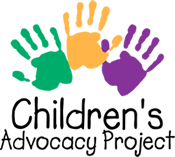We’ve all heard the term “stranger danger” and have probably even told our children to look out for it. The truth surrounding child sexual abuse is that 90% of child victims will be abused by someone they know, someone they probably trusted, and someone they even love.
Perpetuating stereotypes about child abuse predators can be dangerous! Leading children to believe that a “creepy guy in a trench coat” is the one you should be worried about can create a very confused child when it is their own family member or trusted person in their life who hurts them. As well, making it more difficult for a child to report their own abuse and tell their story so they may begin to heal.
Stereotypes greatly benefit a predator, allowing them to easily gain access to vulnerable children. The more that we as parents and caregivers rely on stereotypes, the easier it is for predators to gain access to vulnerable children. As well, the harder it will be for a child to understand what has happened to them and make it even more complicated for that child to know how to respond.
Child abuse does not always look like an “attack,” at first, it might appear as a hug or a tickle. Those seemingly innocent actions become the process for grooming and suddenly that close relationship becomes inappropriate.
View the signs and symptoms of abuse.
We must be able to break through the stereotypes surrounding child abuse as a community, and recognize that child abuse can happen anywhere, in any community, to any child. Once we remove our blinders, educate ourselves on the signs and symptoms of abuse, share our knowledge with others, and educate your children about appropriate touch and body parts we will then be able to successfully begin to put an end to child abuse.
We grow better together.
Looking for resources for parents and families during the difficult time of Covid-19? Check out some of these resilience resource pages below:

